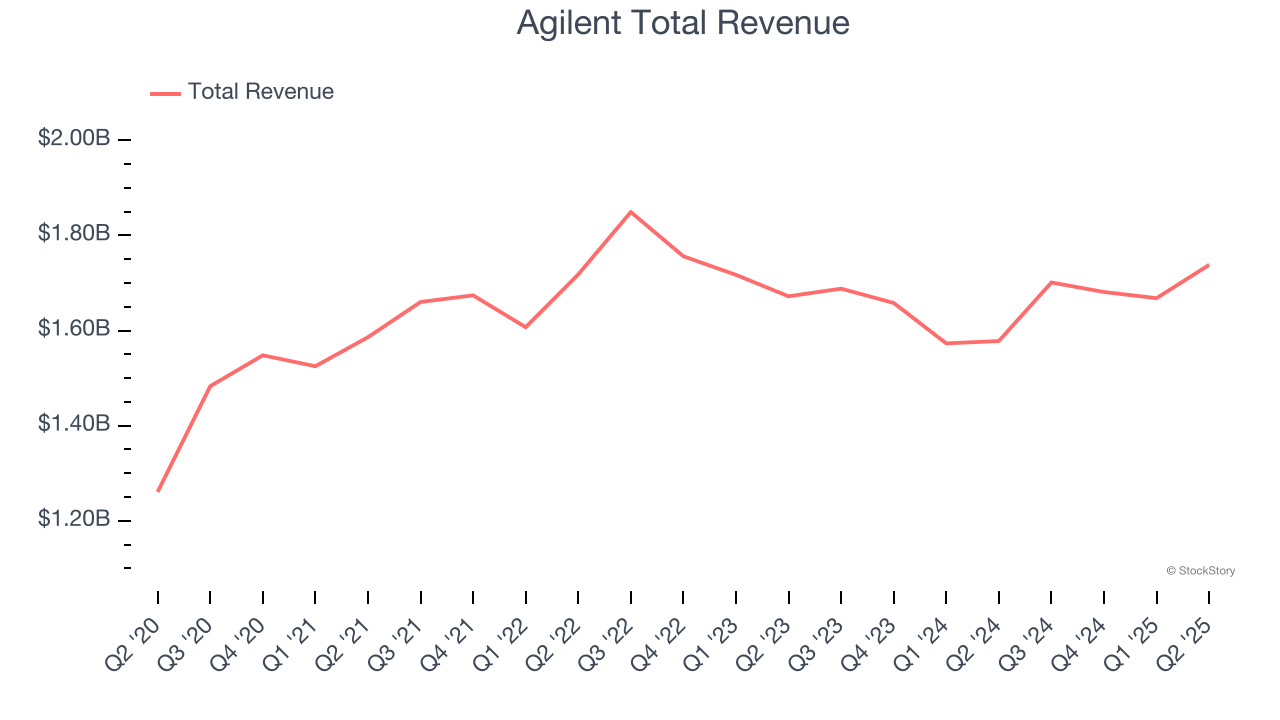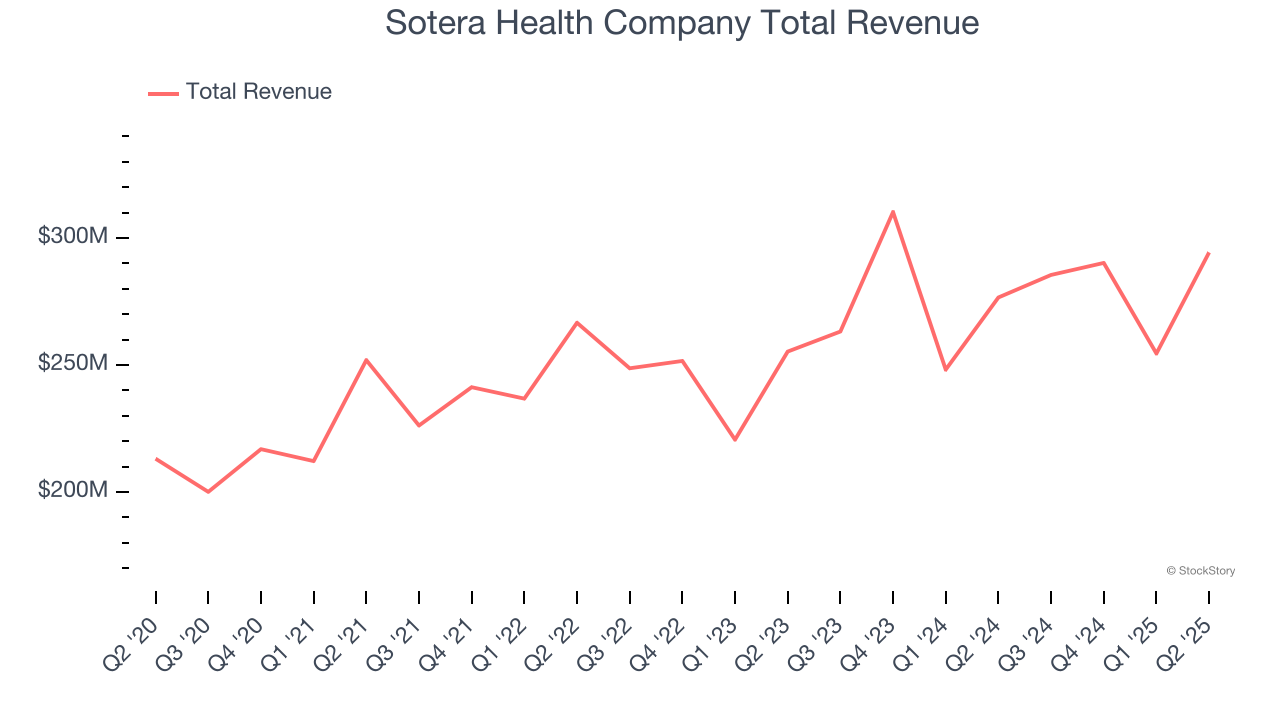
As the craze of earnings season draws to a close, here’s a look back at some of the most exciting (and some less so) results from Q2. Today, we are looking at research tools & consumables stocks, starting with Agilent (NYSE:A).
The life sciences subsector specializing in research tools and consumables enables scientific discoveries across academia, biotechnology, and pharmaceuticals. These firms supply a wide range of essential laboratory products, ensuring a recurring revenue stream through repeat purchases and replenishment. Their business models benefit from strong customer loyalty, a diversified product portfolio, and exposure to both the research and clinical markets. However, challenges include high R&D investment to maintain technological leadership, pricing pressures from budget-conscious institutions, and vulnerability to fluctuations in research funding cycles. Looking ahead, this subsector stands to benefit from tailwinds such as growing demand for tools supporting emerging fields like synthetic biology and personalized medicine. There is also a rise in automation and AI-driven solutions in laboratories that could create new opportunities to sell tools and consumables. Nevertheless, headwinds exist. These companies tend to be at the mercy of supply chain disruptions and sensitivity to macroeconomic conditions that impact funding for research initiatives.
The 10 research tools & consumables stocks we track reported a satisfactory Q2. As a group, revenues beat analysts’ consensus estimates by 2.2% while next quarter’s revenue guidance was 0.5% below.
In light of this news, share prices of the companies have held steady as they are up 3.3% on average since the latest earnings results.
Agilent (NYSE:A)
Originally spun off from Hewlett-Packard in 1999 as its measurement and analytical division, Agilent Technologies (NYSE:A) provides analytical instruments, software, services, and consumables for laboratory workflows in life sciences, diagnostics, and applied chemical markets.
Agilent reported revenues of $1.74 billion, up 10.1% year on year. This print exceeded analysts’ expectations by 4.3%. Overall, it was a strong quarter for the company with a solid beat of analysts’ organic revenue estimates and full-year revenue guidance beating analysts’ expectations.

Agilent scored the fastest revenue growth and highest full-year guidance raise of the whole group. Unsurprisingly, the stock is up 8.7% since reporting and currently trades at $129.05.
Is now the time to buy Agilent? Access our full analysis of the earnings results here, it’s free.
Best Q2: Sotera Health Company (NASDAQ:SHC)
With a critical role in ensuring the safety of millions of patients worldwide, Sotera Health (NASDAQGS:SHC) provides sterilization services, lab testing, and advisory services to ensure medical devices, pharmaceuticals, and food products are safe for use.
Sotera Health Company reported revenues of $294.3 million, up 6.4% year on year, outperforming analysts’ expectations by 6.8%. The business had a stunning quarter with a solid beat of analysts’ organic revenue and full-year EPS guidance estimates.

Sotera Health Company achieved the biggest analyst estimates beat among its peers. The market seems happy with the results as the stock is up 38.3% since reporting. It currently trades at $15.55.
Is now the time to buy Sotera Health Company? Access our full analysis of the earnings results here, it’s free.
Weakest Q2: Bruker (NASDAQ:BRKR)
With roots dating back to the pioneering days of nuclear magnetic resonance technology, Bruker (NASDAQ:BRKR) develops and manufactures high-performance scientific instruments that enable researchers and industrial analysts to explore materials at microscopic, molecular, and cellular levels.
Bruker reported revenues of $797.4 million, flat year on year, falling short of analysts’ expectations by 1.5%. It was a disappointing quarter as it posted a significant miss of analysts’ full-year EPS guidance estimates and a significant miss of analysts’ EPS estimates.
Bruker delivered the weakest performance against analyst estimates and weakest full-year guidance update in the group. As expected, the stock is down 21.5% since the results and currently trades at $29.81.
Read our full analysis of Bruker’s results here.
Danaher (NYSE:DHR)
Born from a real estate investment trust that transformed into a manufacturing powerhouse, Danaher (NYSE:DHR) is a global science and technology company that provides specialized equipment, software, and services for biotechnology, life sciences, and diagnostics.
Danaher reported revenues of $5.94 billion, up 3.4% year on year. This result beat analysts’ expectations by 1.7%. More broadly, it was a satisfactory quarter as it also produced a beat of analysts’ EPS estimates but revenue guidance for next quarter slightly missing analysts’ expectations.
The stock is up 6% since reporting and currently trades at $199.25.
Read our full, actionable report on Danaher here, it’s free.
Waters Corporation (NYSE:WAT)
Founded in 1958 and pioneering innovations in laboratory analysis for over six decades, Waters (NYSE:WAT) develops and manufactures analytical instruments, software, and consumables for liquid chromatography, mass spectrometry, and thermal analysis used in scientific research and quality testing.
Waters Corporation reported revenues of $771.3 million, up 8.9% year on year. This print topped analysts’ expectations by 3.3%. Zooming out, it was a satisfactory quarter as it also logged a solid beat of analysts’ organic revenue estimates but revenue guidance for next quarter meeting analysts’ expectations.
The stock is up 3.1% since reporting and currently trades at $299.85.
Read our full, actionable report on Waters Corporation here, it’s free.
Market Update
Thanks to the Fed’s series of rate hikes in 2022 and 2023, inflation has cooled significantly from its post-pandemic highs, drawing closer to the 2% goal. This disinflation has occurred without severely impacting economic growth, suggesting the success of a soft landing. The stock market thrived in 2024, spurred by recent rate cuts (0.5% in September and 0.25% in November), and a notable surge followed Donald Trump’s presidential election win in November, propelling indices to historic highs. Nonetheless, the outlook for 2025 remains clouded by potential trade policy changes and corporate tax discussions, which could impact business confidence and growth. The path forward holds both optimism and caution as new policies take shape.
Want to invest in winners with rock-solid fundamentals? Check out our Strong Momentum Stocks and add them to your watchlist. These companies are poised for growth regardless of the political or macroeconomic climate.
StockStory is growing and hiring equity analyst and marketing roles. Are you a 0 to 1 builder passionate about the markets and AI? See the open roles here.
